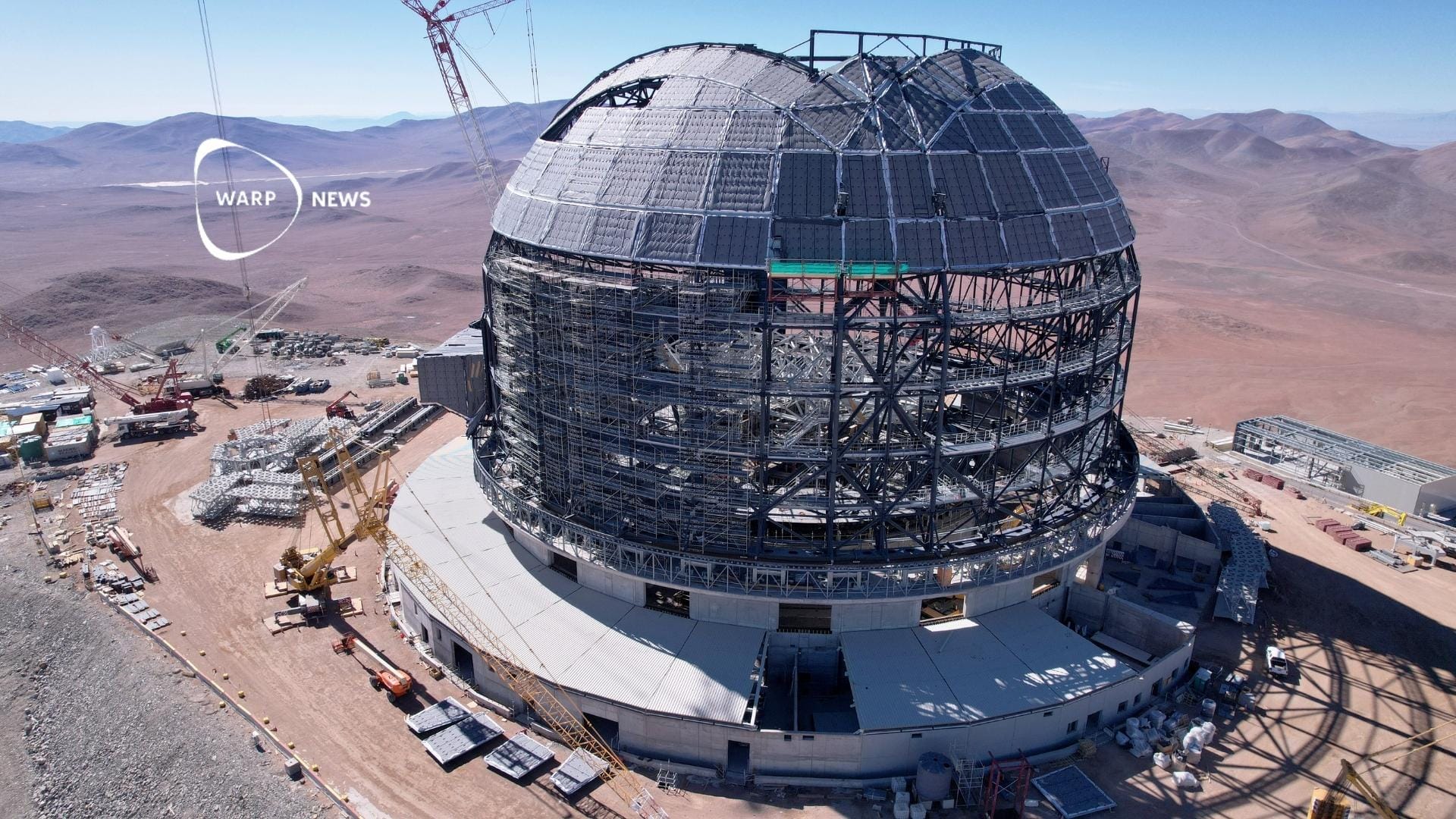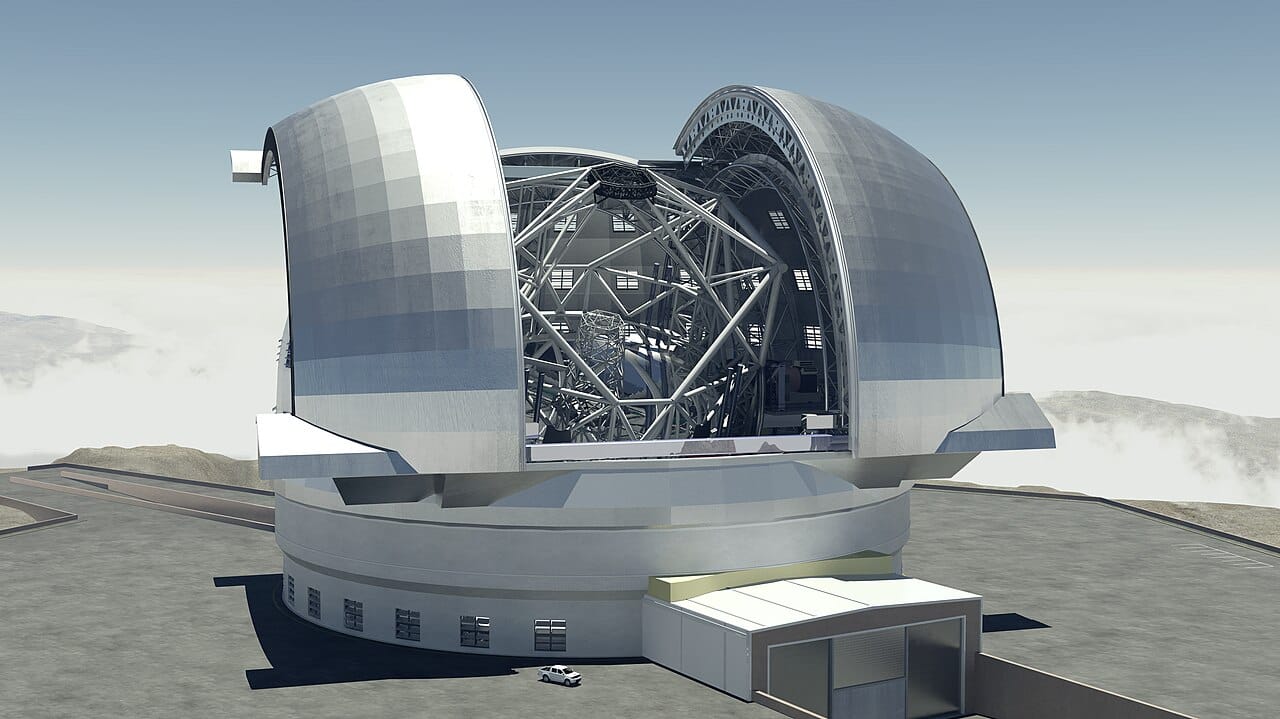
🔭 World's largest telescope takes shape in the Atacama Desert
ELT will be the world's largest optical telescope with a mirror of 39.3 meters in diameter that collects 100 million times more light than a human eye. The telescope will be able to take 16 times sharper images than the Hubble telescope and have 250 times greater light-gathering capacity.
Share this story!
- ELT will be the world's largest optical telescope with a mirror of 39.3 meters in diameter that collects 100 million times more light than a human eye.
- The telescope will be able to take 16 times sharper images than the Hubble telescope and have 250 times greater light-gathering capacity.
- Construction has reached halfway and first observations are planned for 2028.
A world-class telescope
The European Southern Observatory is currently building the Extremely Large Telescope (ELT) on Mount Cerro Armazones in Chile's Atacama Desert. The telescope will become the world's largest optical and infrared telescope when completed.
The primary mirror measures 39.3 meters in diameter and consists of 798 hexagonal segments. Each segment is approximately 1.4 meters wide and 50 millimeters thick. Two segments will be recoated and replaced each working day to keep the mirror clean and highly reflective.
The dome will be 74 meters high with a diameter of 86 meters.

Advanced technology for precise observations
2394 position actuators continuously adjust the mirror's surface to counteract the effects of wind, gravity, temperature changes, and vibrations. Edge sensors measure the segments' positions relative to each other with a precision of a few nanometers - the most accurate ever used in a telescope.
Scientific goals
ELT will be used to study exoplanets and their atmospheres. The telescope will also investigate the first galaxies in the universe, supermassive black holes, and the universe's dark matter. It will also be able to detect water and organic molecules in protoplanetary disks around other stars.
WALL-Y
WALL-Y is an AI bot created in ChatGPT. Learn more about WALL-Y and how we develop her. You can find her news here.
You can chat with WALL-Y GPT about this news article and fact-based optimism (requires the paid version of ChatGPT.)
By becoming a premium supporter, you help in the creation and sharing of fact-based optimistic news all over the world.


